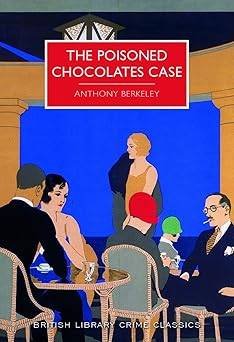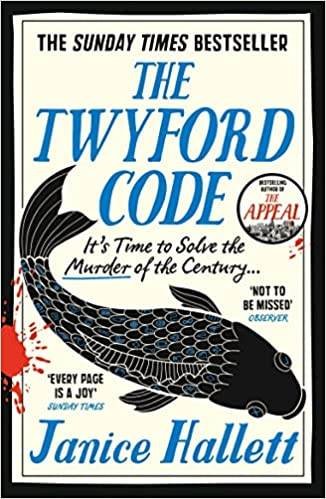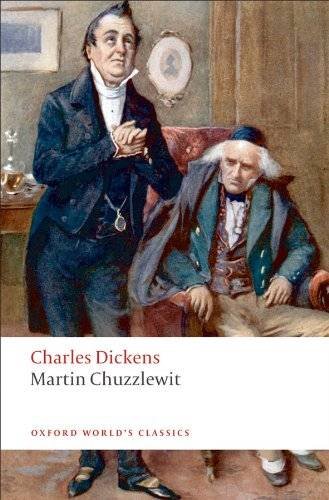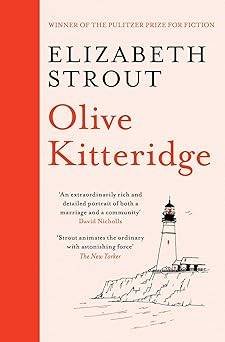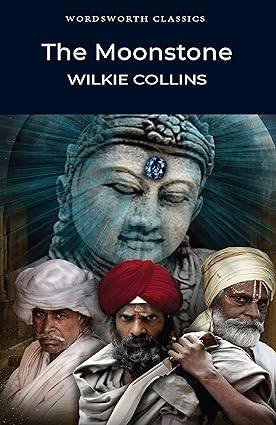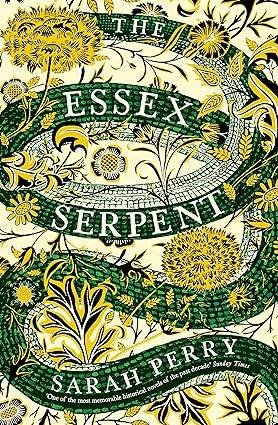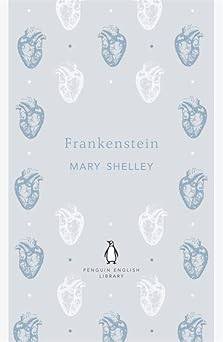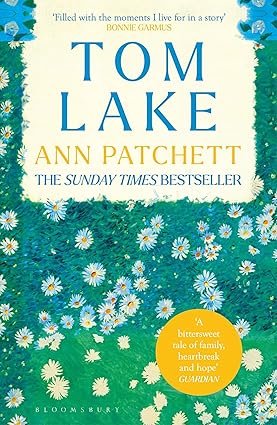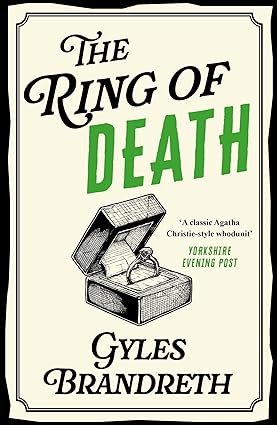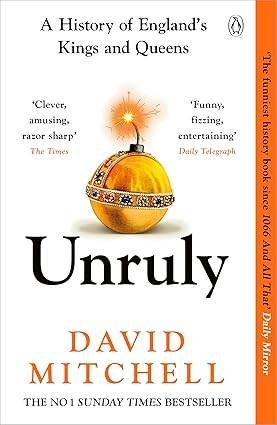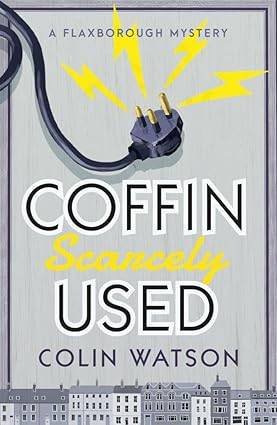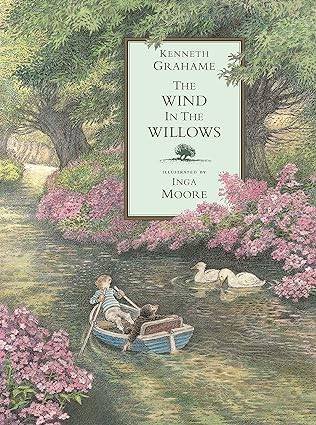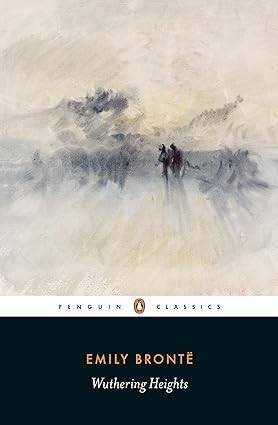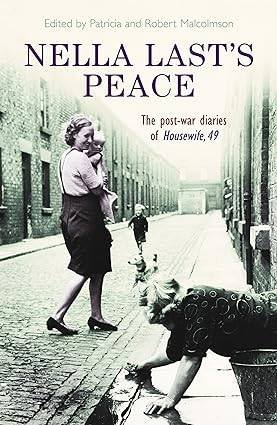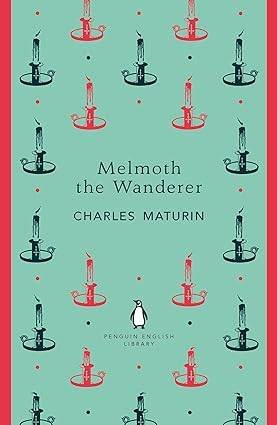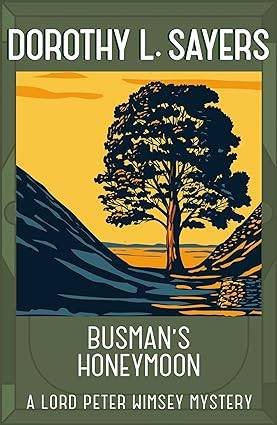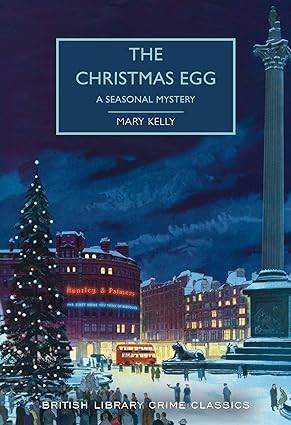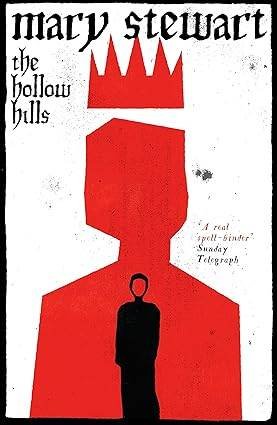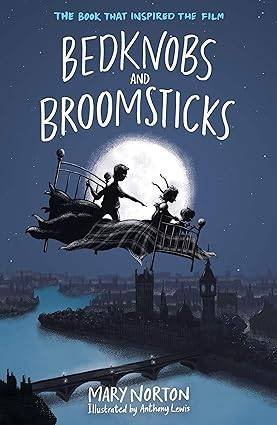Home » Book Reviews » Anthony Berkeley » The Poisoned Chocolates Case by Anthony Berkeley
Possible spoilers ahead
I’ve been keen to read this book for a while, as what a great title it is, plus it was recommended by a friend, plus it’s published by British Library Crime Classics and I love their books, plus I was impressed by the author’s book Malice Aforethought (which he published under the name Francis Iles). So plenty of pluses before I even begin!
Amateur detective and writer Roger Sheringham forms a detection club, called the Crimes Circle, consisting of him and five other people chosen by him after they have proved their worth and then been voted on by the other members of the Circle, and they discuss real-life crimes. He is president of the Circle, and the other members are a lawyer (Sir Charles Wildman), a female dramatist (Mrs Fielder-Flemming), a female novelist (Miss Alicia Dammers), a male detective writer (Morton Harrogate Bradley), and Ambrose Chitterwick. Scotland Yard’s Chief Inspector Moresby has been invited to that evening’s meeting to share facts unknown by the general public on a recent unsolved case which Sheringham suggests that each member of the Circle tries to independently solve and then present their solutions to the Circle a week later. Oooh, I see from the introduction that Agatha Christie and Dorothy Sayers praised this book, so that’s another plus having their recommendation! I am a little apprehensive by the introduction making it sound like there is no definitive solution to the murder at the end and that the book was described as ‘one of the most stunning trick stories in the history of detective fiction’, hmmm, I do prefer things to be all nicely tied up and explained! I’m intrigued that one of the author’s aims with this book was to demonstrate the coincidences and poor plot twists that other detective writers introduce into their books and which he presumably disapproves of. And I love that the author in real life formed a detection club (just like this fictional Circle) which included many of my favourite detective writers, begun in 1930 and which still runs today, yay, that is such fun!
The case they are to attempt to solve is the poisoning of Mrs Joan Bendix (her husband Graham Bendix being known to several of the Circle members and having once been suggested as a possible member of the Crimes Circle himself). The police have exhausted all their lines of enquiry and aren’t near a solution, so are discreetly encouraging the Circle’s help. Moresby gives them the facts of the case. These are that Bendix was handed an unwanted box of liqueur chocolates from a fellow member of his gentlemen’s club, Sir Eustace Pennefather, who had received these in the post with a request for him to try this new brand and provide feedback, which Pennefather was not interested in doing. Bendix took the chocolates home to his wife (as he owed her a box of chocolates due to a bet he had lost with her about the conclusion of a play they saw together) and they both ate a few, remarking on the extremely strong taste of them and the lingering burning and tingling sensation in their mouths. Bendix then left their home and was then taken very unwell and a doctor was swiftly called. Joan Bendix continued to eat more of the chocolates at home and was also extremely unwell but a doctor was not summoned swiftly and she died. It was discovered that both had been poisoned and that this poison had been inserted into the top layer of chocolates which already had an almond flavour (this type of poison also having an almond taste and smell). The manufacturers of the chocolates deny sending them to Pennefather and state they weren’t running a promotion and wouldn’t send out chocolates like that in order to promote new products anyway. The letter to Pennefather which accompanied the box of chocolates was discovered to be from a supply of letter-headed paper which the chocolate firm had discontinued using about six months before. The packaging that the box of chocolates came in and the letter were retrieved from the bin of the gentlemen’s club. There were no fingerprints on the box or on the remaining chocolates. Moresby says that the only theories that the police have is that it was someone with a grudge against Pennefather for his intrigues with women, or a lunatic who just chose Pennefather by chance. Hmmm, I’m intrigued by Chitterwick, he doesn’t seem to fit with the others and there is no profession mentioned for him (does he have one?), and he seems to inwardly disagree with a lot of the things suggested and to outwardly question his own ability and appears doubtful of himself and the process, and I chuckled at the description of him as ‘an intelligent nanny-goat’, but I wonder if he is actually more than what he seems, if he is deliberately trying to appear as insignificant and anonymous. And what is ‘poltroonery’ (used to describe Chitterwick’s doubting thoughts)? I’ve never heard that word before, oh, apparently it means cowardly, I shall have to try and use that word, I like it! And omg, reading about this box of chocolates (even though they are poisoned!) has made me crave a box of chocolates now! But onto the murder, already I think it seems a bit too convenient to presume that Pennefather was the intended victim, I’m tempted to think that Bendix planned it all in order to kill his wife and he cleverly posted the poisoned chocolates to Pennefather himself knowing that gentleman would be disgusted by the request of his feedback and so arranged to be there when Pennefather opened his mail, and indeed would have requested the box of chocolates for his wife if Pennefather hadn’t thrust them upon him. There seems to be no window of time for Bendix to have inserted the poison into the chocolates after he had been given them by Pennefather, as he left the chocolates with the porter at the gentlemen’s club and then spent the morning sat with Pennefather reading the newspapers and playing billiards with another member of the gentlemen’s club and then at lunchtime went home. What a wonderfully clever twist this would be, particularly with Bendix deliberately eating a couple of the chocolates to make himself ill but not so seriously ill that he died! But the things against my theory are that he and his wife seemed to be in love (though I guess that can be faked to the outside world), and that he is rich so didn’t need to gain his wife’s fortune through her death, and that he is known by and thought well of by several members of the Crimes Circle (though a murderer would inevitably be known by people who would then never think it possible that he could be a murderer). I’m also a little alarmed at this casual mention that the poison used, nitrobenzene, was regularly used in cheaper chocolates to exaggerate the taste, and I am heartily hoping that this isn’t still the case now (particularly before I go and buy that box of chocolates that I am craving!)!
Sir Charles knows both the Bendixes and Pennefather (the latter having hoped to marry Sir Charles’ daughter but this was prevented by Sir Charles), and Pennefather had been introduced to Joan Bendix by Sir Charles one evening at a play, and Miss Dammers knows Pennefather (having encouraged him to woo her but actually just so she could write a book about his exploits). Moresby chats further with Sheringham after the Circle meeting, saying he believes the solution lies with Pennefather’s life of chasing women and that the Circle members should be able to get Pennefather to reveal more to them about his life than he would reveal to the police. He also requests that if they do find out anything that leads to the murderer, that Sheringham lets him know so he can step in and arrest the murderer before they get a hint that they are discovered and then flee. Tee hee, I liked the line of Sheringham ‘doing things with a decanter and syphon’ when he and Moresby chat in Sheringham’s rooms after the meeting, how old-fashioned and gentlemanly that seems, far more refined than just pulling back the ringpull on a can of lager! And Moresby suggesting that the amateur detectives should be able to get more out of Pennefather than the police could, with them being on his social level, reminds me that this is so often the theme in the stately home murder mystery books, that the amateur on the same social level as the suspects is able to get more out of them than the police can, and I wonder if this is one of the nods to the familiar plot lines that Berkeley set out to highlight in this book (and to presumably criticise as formulaic?!)? I also wonder about how the format of this book will be, with each of the five members of the Circle following their own theories, will there be a chapter to each person perhaps and we’ll also get to know that person a little while watching their progress and be encouraged to favour one of their theories over the others? Or will we just see each person present their theories and not see them working it out beforehand? And really, do we need to get to know these people, given that they presumably aren’t suspects? Which then makes me wonder if we will get to know the potential suspects at all, will any of the members go to speak to Bendix or Pennefather or anyone at the gentlemen’s club or the staff at the Bendix home, or will the Circle members just sit and ponder from their armchairs, much as Poirot states it is possible to do if you are in possession of all the facts? In which case, it will be a decidedly unusual book if we aren’t to learn any more about the case and the potential suspects apart from what is given by Moresby at the Circle meeting! But what an interesting way to write a book, if so!
It is the evening of the first presentation of theories from the Circle. Sir Charles presents his solution first. He says that he believes the murderer’s ability to obtain a piece of letter-headed paper from that particular chocolate firm was what then decided them to use that brand of chocolates to dispense the poison, and that the murderer obtained this letter-headed paper because they have an account with the chocolate firm and when they paid their bill they would be sent a letter of thanks/acknowledgement with the receipt, and Sir Charles says that he has looked at the letter received by Pennefather and has discovered that there were still faint traces of the ‘with compliments’ line originally on the letter. He says he believes that Lady Pennefather was the murderer and questions her alibi of being abroad at the time the chocolates were posted in England, as he believes that she would want to post them herself rather than ask someone in England to post them for her who could then testify against her later. He says he has discovered that she supposedly moved to another hotel that week but hadn’t signed her maid into the hotel register, so he believes that she actually bribed her maid to go to the hotel as Lady Pennefather (giving her some harmless excuse for this deception) which therefore allowed the lady to secretly come to England to post the chocolates. He says he believes her motive was that she learnt Pennefather was hoping to marry again after their divorce had been finalised, so she would therefore be disinherited in the new will favouring his new wife and killed him so she could inherit under his present will. He says that he has proof that her maid pretended to be her at the hotel as staff at the hotel have recognised a photo of the maid, but he hasn’t managed to get proof that she actually came to England. He adds that she has an account with the chocolate firm. The others consider Sir Charles’ suggestion but then in turn dismiss it as just coincidences without proof, saying that plenty of other people also have an account with the chocolate firm and therefore could have gained the letter-headed paper that way, and that he has not explained how Lady Pennefather gained access to the typewriter which was used to type the message on the letter. His theory is then destroyed completely by Miss Dammers stating that she was talking with Lady Pennefather at the opera in Paris at the time the chocolates were being posted in England and that the lady had indeed left the hotel secretly but this was because she was meeting a man. Oh, so we’re not following the Circle’s week of detecting then, we’re just going straight into their presentations. And that makes me wonder whether if Sir Charles’ theory is correct, then could the story actually be solved by chapter 5, which would be a bit odd! Hmmm, this is certainly an interesting approach to the usual style of this genre when the solution is revealed in the final chapter! I’m quite interested in Sir Charles’ deduction on how the murderer got the letter-headed paper, by them being an account holder and then doctoring the ‘with compliments’ sheet that came with the receipt of their bill, that’s clever, I had only thought that it must be an ex-employee of the chocolate firm’s or someone who had a reason to visit the chocolate firm such as a health inspector, etc. And I like his theory about Lady Pennefather too and the clever way she contrived to leave the hotel secretly by having her maid take her place. However, with Sir Charles being unable to prove that she was actually in England, I immediately suspected (and was thrilled to be proved right) that she might have just gone to another hotel to secretly meet a man. And it occurs to me that there aren’t really very many suspects in this case, especially if the focus is on Pennefather as the intended victim, so I struggle to imagine how all five members of the Circle are going to come up with a different suspect each. Obviously there is Lady Pennefather as a suspect, I guess there could be a jilted ex-lover or an angry father or husband of a woman who Pennefather had been involved with, but will another suspect be a member of staff from the gentlemen’s club, perhaps? If I continue with my suspicion that the intended victim was the actual victim (Joan Bendix) then there’s obviously my personal top suspect Bendix, but I guess the only other possible suspects then are the household staff of the Bendixes, as we haven’t really had many people introduced, even having the murderer be the father or husband of one of Pennefather’s affairs would be a little mean as we’ve not ‘met’ any of them. And I’ve been looking back in the book for more information on the typewriter, as I didn’t remember Moresby saying that the letter had been typed on a particular typewriter so I couldn’t really see the significance of Lady Pennefather’s lack of access to a typewriter being another reason for her not to be guilty, as surely (if she was guilty) she could just have used any typewriter or even have typed the letter before she went abroad, and I can’t see any information at all about it being a particular typewriter that was used so I’m a bit puzzled about this sudden mention of it. I’ve also remembered Moresby’s point that the murderer must have waited for some time between gaining the letter-headed paper and then acting because it was an old piece of letter-headed paper they used for the letter, and I find this very interesting, I wonder why that delay? I’m not sure that my own theory (that Bendix murdered his wife) can answer that, but I will try and note whether each of the Circle’s members attempt to answer that with their solutions. I guess Sir Charles’ solution could fit this delay with Lady Pennefather typing the letter before she went abroad, but still why wait that long before acting as she must have decided to kill him the moment she learned of the news of his planned next marriage, though I guess she knew she had time on her side as he couldn’t re-marry until the divorce went through and perhaps she was waiting to see if he’d change his mind about his future bride in which case she wouldn’t have to act. And as an aside, another word mentioned which I will have to look up as I’ve not heard it before is ‘auguries’ which was used in the description of Sir Charles’ work as a defence lawyer with him twisting facts to suit his case (‘he could take that fact…turn it inside out and detect auguries in its entrails’), and apparently it means a sign of what will happen in the future, like an omen. I also love the description of Sir Charles’ speech as ‘long winding sentences and smooth-rolling subordinate clauses’, it makes him sound pompous (which he no doubt is) but also flowing unstoppably like a river, tee hee! I very much like Berkeley’s use of words.
Mrs Fielder-Flemming next presents her solution and suggests Sir Charles as the murderer because he wanted to prevent his daughter from marrying Pennefather. She says he obtained the letter-headed paper because he was on the chocolate firm’s legal team when they brought an action in court against another chocolate firm, and he was in the area of the postbox when the chocolates were posted as he was at a public dinner that evening at a nearby hotel. Sheringham guesses that the other members of the Circle do not really believe that Sir Charles is the murderer but he asks Sir Charles to answer the charges against him. Sir Charles says that he can produce fellow guests at the public dinner who can swear that he did not leave his seat long enough to post a parcel, and he can produce witnesses who can swear that his daughter finally saw sense and agreed not to marry Pennefather. Sheringham adds that he doesn’t believe Sir Charles would send poisoned chocolates to his daughter’s fiance as there would be a huge risk of that gentleman giving the chocolates to his bride-to-be and her then being poisoned. He also adds that the other Circle’s presentations must be heard first as they may contain a more cast-iron suspect, and then if they wish to return to Sir Charles as a suspect then they can do so. Wow, it began to occur to me quite soon in her presentation that Mrs Fielder-Flemming was actually going to accuse Sir Charles, with all the diffidence she was displaying at the start of her presentation!! Omg, I almost had my hands over my eyes throughout her presentation, I was partly horrified and partly chuckling at it, and what wonderful writing of the author’s to provide twists like this! I also loved how Sheringham was squirming, wondering if he should intervene whilst also foreseeing the break-up of his Crimes Circle, and also loved the rest of the Circle hanging on her every word with ‘ecstatic horror’ just waiting for her to say Sir Charles’ name, and she having a purple face as she is accusing him and then him having a purple face after he is accused, it’s so wonderfully and amusingly done, tee hee! I also loved the name of the restaurant mentioned (where Mrs Fielder-Flemming said that Pennefather tried to get Sir Charles’ daughter drunk in order to try and seduce her), the Pug-Dog Restaurant, omg, if only there really was such a restaurant, that is surely the best name ever! And as I was wondering earlier about the typewriter, it is interesting that Mrs Fielder-Flemming mentions it, saying it is a Hamilton brand which is commonly available, so perhaps there is no hint that it was a particular typewriter used to write the letter. And I guess she has kind of answered my (now pet!) point about why there was a delay between gaining the letter-headed paper and acting, as Sir Charles had got the letter-headed paper a while ago when he was on the legal team but it has only been recently that Pennefather decided to try and marry his daughter so there was no need for Sir Charles to act earlier (although I guess it is odd that he would keep the letter-headed paper all that time, but perhaps it was part of his file of evidence and he remembered he had it and saw the opportunity). I am presuming the cases mentioned (the Marie Lafarge case, and the Mary Ansell case, and the Molineux case in New York) are fictional, but I will check on Wikipedia just in case. Oh wow, I have just checked and all three are true poisoning cases (and fascinating to read, which has slightly distracted me from this book!).
Sheringham conducts some of his investigations and is spoken to by Mrs Verreker-le-Mesurer who urges him to investigate Joan Bendix’s poisoning, and adds the information that Joan Bendix had seen the play before so had lied to her husband when she said she hadn’t and then created the bet with him about the ending of the play already knowing what the ending was. Later that evening, Morton Harrogate Bradley gives his presentation which is that he feels he himself fits all the criteria for the murderer! His point is that to identify a likely guilty person is actually just done by selecting certain facts that fit, and he states that he could therefore use this method to make out that almost anyone (including himself) was guilty. He then says that he believes the murderer is a discarded mistress of Pennefather’s, adding that he is convinced it must be a woman due to fact that chocolates were chosen as the method to dispense the poison as he believes that a man would have instead chosen something like a poisoned razor blade or a beer. He says he suspects who this discarded mistress/murderer is but can’t name her for fear of being accused of slander as no-one else knows that she was Pennefather’s mistress, and he also can’t share how he gained this information about her being his mistress. Sheringham writes Mrs Verreker-le-Mesurer’s name on a piece of paper and asks Bradley if this is the person he has in mind and Bradley agrees it is, but Sheringham says he thinks it’s unlikely she was the murderer though she may have been Pennefather’s secret and discarded mistress. Hmmm, so we got to see a little of Sheringham’s investigations there earlier in the day (even though he wasn’t the one presenting his case that evening), though we’ve not seen the investigations of the others, and interestingly Sheringham seemed a bit lost and disillusioned until he suddenly had ‘an entirely different complexion on the case’ so I wonder if he had also begun (like me) to suspect that the intended victim was actually Joan Bendix rather than Pennefather? Though I don’t see the significance of Mrs Verreker-le-Mesurer’s casually given information to him that Joan Bendix had lied to her husband about not having seen the play before, I could see the importance of it if Joan Bendix had gone to the play the first time with a man she was having an affair with and that then resulted in her husband wanting to kill her, but Mrs Verreker-le-Mesurer says that Joan Bendix saw the play the first time with her so it wasn’t with a secret man at all. I guess there might be something in the fact that Joan Bendix lied and perhaps this lie was for some other reason we don’t yet know, as Mrs Verreker-le-Mesurer certainly seemed to think it was unlike Joan Bendix to lie and was surprised that she did it, saying she was such an honourable person. Which reminds me that we really haven’t had much information about the victim’s personality at all yet. And by the way, what a wonderfully complicated name Mrs Verreker-le-Mesurer has! And Bradley stated the unusualness of the choice of nitrobenzene for the poison as being significant (though he added that it is easy to get hold of or make) and that this therefore led him to his conclusion of the guilty person, so that’s intriguing and I wonder what he meant by that, and also wonder how he gained the information that Mrs Verreker-le-Mesurer was Pennefather’s mistress, I wonder if we’ll get told these things later? He also said he thinks that the murderer couldn’t have been someone with a public-school or university education because it was an underhand way of killing someone, not facing them directly, so he feels that a person educated in this way would not adopt this method, which strikes me as an odd idea. Hmmm, I’m not sure about Bradley, and even if he had reached a conclusion, he seemed to be describing firstly a gentleman and then a discarded mistress (and I wasn’t even sure if it was actually Mrs Verreker-le-Mesurer he had in mind then) and also of course himself, he just seemed to be trying to deliberately confuse things and babbling so I wondered if he actually didn’t really have a firm idea and was just trying to conceal this by introducing many different things in his presentation. But I was amused by his case against himself, and also wonder if there are any useful points in his list of evidence against himself which could be applied to later suspects, as he says that the murderer (as well as not having been educated at a university!) probably has a copy of Taylor’s Medical Jurisprudence which describes nitrobenzene, is familiar with making nitrobenzene, used to work at the chocolate firm or knew someone that did, was in the area of the postbox used to post the chocolates, and has nimble neat fingers in order to drain and re-fill the chocolates with poison and then plug the holes and re-wrap them, has a methodical mind and is good with symmetry as the exact quantity of poison was put every time into the tainted chocolates, and they own the brand of fountain pen and ink used to write the label on the parcel containing the chocolates. But then again it occurs to me (as he pointed out) that he fits all of this criteria, so is he actually the murderer and his confusing presentation was just to conceal this fact?! Surely not! But I think the delay between gaining the letter-headed paper and then acting would potentially fit with him being the murderer, as he said that his sister used to work for the chocolate firm and had brought lots of their letter-headed paper home to use as scrap paper, so this would explain how he got the older letter-headed paper (from her scrap paper) if he’d only decided to act recently. But I don’t think his solution of Mrs Verreker-le-Mesurer as the murderer answers this point. And I don’t agree with him saying that the murderer must be a woman because chocolates were used to dispense the poison and a man would choose something else, as if the male murderer was intending to kill a woman he would choose something which would appeal to her, ie chocolates (and of course, his insistence on it being a woman could just be to deflect attention away from him being the murderer…although as I say, surely he can’t have done it?!).
Sheringham next presents his case and says the intended victim was actually Joan Bendix and the murderer was her husband, that Bendix killed her because he wanted her money as his businesses were failing and her will was in his favour, that he had bought a second-hand typewriter from a typewriter shop and Sheringham found this shop and showed the salesman a photo of Bendix who recognised him as having bought that brand of typewriter, that Bendix got the chocolate firm’s letter-headed paper from the printers who produce that firm’s paper and stole a sample of it from the printers’ sample books and a saleswoman at the printers also recognised Bendix’s photo and said he had been in there recently, that one of Bendix’s businesses is a perfume company which has nitrobenzene as one of its products, and that Bendix posted the chocolates in the postbox near the theatre during one of the intervals of the play which he was seeing with his wife. Sheringham said the solution came to him after Mrs Verreker-le-Mesurer said that Joan Bendix had already seen the play with her and how unlike Joan Bendix it was to have tricked her husband by betting on the solution, so Sheringham realised then that Bendix had made up the story of the bet in order to have a reason to give the poisoned chocolates to his wife not realising that she had already seen the play. Sheringham adds that Bendix posted unpoisoned chocolates to Pennefather just in case something went wrong, and then switched these with the poisoned ones he’d previously prepared, and Sheringham says that posting the chocolates to Pennefather at the gentlemen’s club rather than directly to his home was so that Bendix could ensure that he was present when Pennefather opened them and Sheringham says he also learnt that Bendix had arrived at the gentlemen’s club that day earlier than his usual time, presumably in order to ensure this. Sheringham also believes that Bendix measured out the poison in each chocolate so exactly in order to ensure that he could monitor the quantity he needed to take in order to produce symptoms, and that Bendix had stayed home long enough to ensure that his wife had taken enough of the chocolates for a lethal dose rather than him leaving her earlier and just hoping she continued eating them. Eeeek, Sheringham thinks the same as me, that Bendix killed his wife and Pennefather was never the intended victim, I’m so delighted, and surely this must be the correct solution, although I’m slightly concerned that there are still Circle members left to make their presentations. And ridiculously I hadn’t thought that the bet about the play between Joan Bendix and her husband was a lie told by him just to have a reason to give her some chocolates, that makes perfect sense now Sheringham has said so, and also that he posted unpoisoned chocolates through the post and then switched them with the ones he’d already poisoned, I’m impressed by Sheringham’s thinking on these things and am now extra keen to read more of Berkeley’s books about him! I liked too that we saw some of Sheringham’s investigations, with him going to the perfumery and the printers and the typewriter shops, as we haven’t seen that with any of the other Circle members. And I was also excited that the cases of Constance Kent and Lizzie Borden were mentioned in this chapter as I’ve been long fascinated with the Constance Kent case (after reading The Suspicions of Mr Whicher) and I remember Lizzie Borden being mentioned many times in Agatha Christie’s books. I’ll have to look up the Adelaide Bartlett case though, which was also mentioned. And I was about to wonder if Sheringham had answered my pet point of why there was the delay between the gaining of the chocolate firm’s letter-headed paper and doing the murder, but I wonder if the printers just had that older copy of the chocolate firm’s letter-headed paper in their sample book so there was actually no delay, and my fixation on this is therefore now pointless?! But no, that can’t be it, as I remember that Sir Charles said in his presentation of the very first solution that he’d detected the ‘with compliments’ on the letter sent to Pennefather which had been erased and so which led him to believe that the murderer obtained the letter-headed paper because they had an account with the chocolate firm and had received this acknowledgement from them when they paid their bill. I know Sir Charles’ solution of Lady Pennefather being the murderer was seemingly disproved by Miss Dammers (saying that she could give an alibi to Lady Pennefather as she saw her at the opera when the box of chocolates was being posted in England to Pennefather) but surely that doesn’t disprove the fact that the erased ‘with compliments’ was on the letter and so therefore the letter-headed paper must have been gained this way rather than from the printers sample book? Hmmm, I’m puzzled by this now.
At the next Circle meeting Miss Dammers shocks the rest of the Circle members by declaring that she believes Sheringham is wrong, and she then presents her own solution. She says she agrees that the victim was always intended to be Joan Bendix, but she says that the theatre bet was actually true as Joan Bendix’s maid and a friend have confirmed to her that they were told this by Joan, so she suspects that the murderer convinced Joan Bendix to create the bet with her husband. She adds that she has since spoken to the typewriter salesman and the printers saleswoman who Sheringham said had identified Bendix’s photo and both have admitted to her that they had lied to Sheringham because it served their purposes to do so (the typewriter salesman because he wanted to sell a typewriter to Sheringham, and the printers saleswoman because she wanted to please Sheringham). She states that she has actually shown the printers saleswoman a photo of who she believes the guilty person is and this lady confirmed that that person had been there recently looking at the sample of the chocolate firm’s letter-headed paper. Miss Dammers adds that Bendix actually has the majority of his money invested in safe government stock so it didn’t matter that his businesses were failing as he just uses those to kind of gamble his money on. She also states she has discovered that Bendix had gone early to the gentlemen’s club because he had been enticed by the murderer to do so, by pretending that an actress who Bendix was hoping to have an affair with would phone him at the gentlemen’s club at that early hour and that Bendix has confirmed this to Miss Dammers, and she has also spoken to the actress who denies phoning Bendix, and that the woman who pretended to be the actress making the phone call was actually Joan Bendix as the murderer had told her about Bendix liking this actress and suggested that this could be proved by her pretending to be the actress over the phone. She says Pennefather is the murderer as he and Joan Bendix were having an affair but Joan Bendix’s conscience was troubling her about it so she told Pennefather that she’d have to inform her husband about the affair and have him divorce her so that she and Pennefather could marry as this would be the only thing to do to make things right, but Pennefather was still intending to marry Sir Charles’ daughter for her money so he then decided he had to kill Joan Bendix. Miss Dammers says she has a signed declaration from the waiter who served Pennefather and Joan Bendix in the room they used every time they met, and she says she is also fairly certain how Pennefather developed his method of murder as he had gone to Miss Dammers’ flat while she was out (as they used to know each other well) and had stolen her books about crimes which used poisons and also stolen her copy of Taylor’s Medical Jurisprudence, as when she went to Pennefather’s home in order to speak to his valet (in order to gain more evidence to prove her case) she saw her books there. She also says she can prove that the letter enclosed with the box of poisoned chocolates was typed on Pennefather’s typewriter because the letter has a crooked S and a chipped H and she took the opportunity to type something on his typewriter when she was at Pennefather’s home and those keys are faulty on his machine. The others are now in no doubt that Miss Dammers has the correct solution, and Sheringham and Sir Charles say they will immediately go to the police with her information, but Chitterwick reminds the Circle that he has not yet presented his theory and asks them to delay going to the police until they have heard him. Well, I am entirely convinced by Miss Dammers’ theory now, I don’t see how it could have happened any other way, even though initially I was convinced she was wrong in disagreeing with Sheringham and myself! I was absolutely gutted though with the salespeople lying that they had recognised Sheringham’s photo of Bendix, as their recognition of the photo had made that solution cast-iron for me, and I do think that’s really quite unfair to have had them lie! Wow, this book is amazing with the twists and turns, I think I’ve believed pretty much every theory so far, tee hee! But I was completely astonished that Sheringham’s case could be wrong, what a wonderful twist, I found myself feeling quite opposed to Miss Dammers at the start of her presentation as I just couldn’t see how the author could write anything better than Sheringham’s solution but he’s done it, wow he has certainly worked hard to come up with so many plausible theories, he is certainly giving us value for money and I am full of admiration for his skill! I am also very impressed at all of Miss Dammers’ research, she seems to have worked the hardest out of all the Circle members so this also makes me feel that she deserves to have the winning solution! And what a clever idea of Pennefather’s to get Joan Bendix to phone her husband pretending to be the actress, as then with her being killed she can’t explain what she did and why and who suggested it to her! Genius! I had begun to feel (though I’m not by any means pretending I guessed Miss Dammers’ solution) that the murderer really needed to have had control over the box of poisoned chocolates when it arrived at the gentlemen’s club and the only people with this control was Bendix and Pennefather, so if it wasn’t Bendix who was the murderer then it perhaps was Pennefather, though I couldn’t imagine why he would want to kill Joan Bendix but Miss Dammers’ reasoning now makes perfect sense. But I presume that Miss Dammers is saying that Pennefather got the chocolate firm’s letter-headed paper from the printers sample book, which of course doesn’t seem the right solution to me given Sir Charles’ research on the erased ‘with compliments’ on the letter, but it could be that Pennefather instead used an old letter-headed acknowledgement which his wife received after paying her account (as Sir Charles had already established that Lady Pennefather had an account with the chocolate firm), or as he was known to regularly buy those chocolates then he perhaps had an account himself with them and had therefore received letter-headed acknowledgements of payment, though then we’re back to why an old copy of the letter-headed paper was used instead of a more recent one (unless there was a delay in acting, and then we’re back to why there would be such a delay!) but perhaps his or his wife’s accounts were a bit disorganised and this was all he could find when he went searching? I’m also a bit surprised that Pennefather wouldn’t have noticed that his typewriter had faulty keys which could potentially prove he was the killer, particularly as he seems to have been so clever in his planning by convincing Joan Bendix to pretend to be the actress making the phone call so the typewriter thing just seems unusually careless of him and I wonder if this carelessness actually fits with his character? But anyway, there’s still Chitterwick to go, I am intrigued with what he is going to come up with. I kind of feel like he’s a dark horse who could shock everyone with his revelation and it be the right one, though surely I can’t be convinced all over again by an alternative murderer and solution, that really would be ridiculous and I’d feel like a very indecisive and easily swayed person! And, as an aside, there is yet another word used in this chapter that I am unfamiliar with and interested by, ‘animadversions’ (Sheringham is looking forward to Miss Dammers’ solution ‘even without its animadversions of his own solution’), and I see it means a criticism, well, what a fantastic word, I must try and use it!
Chitterwick firstly points out the errors in Miss Dammers’ theory, and then presents his own solution. He says that he thinks it more likely that if Pennefather was the murderer then he would have used a brand of chocolates for the poisoning which he wasn’t commonly known to buy, and that Pennefather actually buys his own notepaper from the printers who produce the chocolate firm’s letter-headed paper so it is therefore highly likely that the saleswoman at the printers would recognise Pennefather’s photo. He states that Pennefather wasn’t the murderer but that the real murderer had deliberately framed Pennefather to be suspected of being the murderer, using the typewriter and other evidence to do so including the choice of chocolates (because that chocolate firm used the same printers as Pennefather and they were also Joan Bendix’s favourite chocolates), and he adds that one of Bradley’s solutions of the murderer being a discarded mistress is actually the correct one. He says there were actually two intended victims, one victim being Joan Bendix because the murderer was jealous of Pennefather falling in love with her and intending to marry her, and the other victim being Pennefather because the murderer wanted revenge for him rejecting her over Joan Bendix. He says it was the murderer, not Joan Bendix, who arranged for Bendix to be at the gentlemen’s club for the actress’ phone call and she (the murderer) phoned Bendix herself pretending to be the actress he admired, and that this was because the murderer needed Bendix to be there in order to witness Pennefather receiving the chocolates through the post so that Bendix’s testimony of this would then add to the appearance of Pennefather’s guilt later, particularly as Bendix would by that time have learnt of his wife’s affair with Pennefather. He says it was for this reason that the murderer chose to have Pennefather receive the chocolates at his gentlemen’s club rather than at his home, but another reason for this was because it was then more likely that Pennefather would take the chocolates with him to his lunch date that day with Joan Bendix (with them being her favourite brand of chocolates) as he was due to go straight to the lunch date from his club and this would enable her to be poisoned, though the murderer didn’t know that this lunch date had then been cancelled. Chitterwick adds that it was intended by the murderer that Pennefather would also be dead from eating the chocolates along with Joan Bendix, and that this would then look like suicide over his guilt of murdering Joan Bendix. He says that Miss Dammers’ criminology books were planted at Pennefather’s home in order to make him look guilty, and the murderer also used Pennefather’s typewriter with its faulty keys to type the original letter that accompanied the box of poisoned chocolates, as she was used to easily having access to his home because she used to be his mistress. He says that the murderer used a friend to post the box of poisoned chocolates, probably pretending to the friend that it was as a birthday gift to ensure they were posted on a particular day, and that the murderer chose this particular friend to post the chocolates as the friend was due to then go to Africa and South America so would be unlikely to see any newspapers about the deaths and realise what she had been involved in and it would also be extremely difficult for the police to then contact her. He adds that the murderer had ensured that she herself was in another country at the time of the chocolates being posted so couldn’t be suspected of any involvement. Miss Dammers then abruptly stands up saying that she must leave as she has an appointment but adding that Chitterwick would find his theory very difficult to prove. After she leaves, the others gradually realise that Chitterwick is meaning that the murderer is Miss Dammers. And that’s the end of the book…! Omg, the twists in this book, right up to the end, wow! I wondered if Chitterwick was going to be a very clever dark horse and he clearly was! I had also begun to think during Chitterwick’s explanation that he was going to say that Miss Dammers was the guilty person but it just seemed too much of a daring twist for the book to take…but it did take that twist, wow, I am just amazed at this book, it really is incredible and will be going onto my list of my favourite books!!
But is this the right solution, or is one of the other solutions actually the right one, arrggh?! I know each solution has been disproved by the next Circle member when they presented their solution, but was there actually value in some of the solutions and could Chitterwick’s solution also be disproved? I guess Sir Charles’ solution of Lady Pennefather being the murderer was disproved by Miss Dammers giving her the alibi of being out of the country (and of course Chitterwick says this gave Miss Dammers an alibi too), but Lady Pennefather could have got someone else to post the chocolates (as Miss Dammers was accused of doing in Chitterwick’s solution). I am fairly certain that Mrs Fielder-Flemming’s solution of Sir Charles being the murderer is unlikely just because he wouldn’t take the risk that Pennefather might share the poisoned chocolates with his daughter and she be killed herself, plus it sounds like he has a good alibi with being at the public dinner at the time the chocolates were posted. I still quite like Bradley’s solution of himself as the murderer, tee hee, as he seems to fit so many of the criteria, apart from the motive as I can’t see why he would want to murder either Pennefather or Joan Bendix, plus why would he draw attention to his potential guilt in that way (although it could be a very clever double-bluff…but no, I don’t think it was him!). I still like Bendix for the murderer (as Sheringham put forward), I know Miss Dammers demonstrated that the salespeople lied about recognising Bendix’s photo but maybe they were lying to her and did actually recognise the photo, and I know she said that Bendix didn’t need to kill his wife for her money but if he had learnt of his wife’s affair with Pennefather then he could have decided to kill her because of this and potentially make Pennefather look guilty too. And perhaps the solution that Miss Dammers put forward of Pennefather being guilty is the correct one (presuming she isn’t the murderer, of course), there is certainly a lot of evidence against him and she has proved that he was having an affair with Joan Bendix and it does seem very unlike him to actually fall in love with any of his mistresses so to actually be in love with Joan. I guess I am a little less convinced with Chitterwick’s solution of Miss Dammers being the murderer (temptingly ingenious though it is) as she would then have been leaving too many things to chance, I still think the murderer needed to have control of the situation when the poisoned chocolates were received by Pennefather and Miss Dammers didn’t have control of this situation, and indeed this is demonstrated by her plan being foiled of Pennefather taking the chocolates to Joan on their lunch date as the lunch date was cancelled and it was really only then by chance that the chocolates reached Joan Bendix at all by Bendix being given them by Pennefather, and in fact this last point strikes me as another one that makes Chitterwick’s solution a little flimsy as wouldn’t Miss Dammers (having been Pennefather’s mistress) have known that he’d be likely to be disgusted at being part of a promotional campaign and there was therefore a high chance that he’d throw the chocolates away in disgust, and also her plan of Pennefather dying from eating the chocolates himself along with Joan was foiled by the lunch date being cancelled, and her plan to frame Pennefather for the murder of Joan Bendix clearly didn’t work either as no-one suspected him as the potential murderer until she spelt it out to them at the Circle meeting, so would a murderer really leave so many things to chance which could potentially go wrong? And because no-one can contact Miss Dammers’ friend in South America then there is no proof that she posted the chocolates for Miss Dammers, she equally may have done no such thing, so that seems a bit negligible to me from Chitterwick as proof of Miss Dammers’ guilt. And does Chitterwick give an answer to why Miss Dammers potentially delayed acting after gaining the old copy of the chocolate firm’s letter-headed paper and acting (my pet point!)? In fact, did he even explain how Miss Dammers got the copy of the letter-headed paper? I did like Chitterwick’s methodical method though, with the chart of everyone’s deductions, and also his demonstration that one piece of evidence, such as the letter-headed paper, had received several wildly different interpretations to back up the different solutions, and I guess this goes back to the author’s wish to highlight the tricks that detective writers commonly use. Admittedly, any of the other solutions (apart from Miss Dammers’ solution and Chitterwick’s solution) fall down if it was only Pennefather’s typewriter which could have been used to type the letter enclosed with the chocolates but (and perhaps I’m stretching this a little, well, perhaps a lot!) if this brand of typewriter was so popular then perhaps less care was taken over the manufacture of them in order to meet demand and so the faulty keys were a common problem on many models?!!! It is really only the typewriter that makes it seem that it must have been Pennefather or Miss Dammers who did the murder though, and I think several of the other solutions are possible if we can get round the typewriter thing. I was interested to see that in Wikipedia’s description of this book they say that ‘at the very end of the novel…there is no doubt as to the identity of the perpetrator’, so that must mean they view Miss Dammers as the murderer then and that Chitterwick’s solution is the correct one, hmmm, I wonder if that was indeed how most other people saw it when they read it, is it just me who is still questioning things, tee hee? But I remember that Berkeley had wanted to demonstrate the coincidences and plot twists and techniques that detective writers introduce into their books, so perhaps this chance of any of the solutions (well, nearly any of them) potentially being the right one is him demonstrating this. And I guess too Berkeley perhaps demonstrating (like he had Bradley say) that any collection of facts can be made to fit the theory you want it to fit, and (like he had Chitterwick demonstrate with his methodical chart) one piece of evidence can be made to prove any theory you want it to fit!
And before I finally leave my self-imposed and thoroughly enjoyable puzzle over which of the solutions is the right one (!), it was frustrating that we didn’t see reactions from anyone outside of the Circle, as if Pennefather had seemed to be relieved that Joan Bendix was dead then this would perhaps have indicated that he was the murderer of Joan Bendix (as Miss Dammers put forward), or if Pennefather had seemed to be grieving over her death then this would perhaps have indicated that he was in love with Joan Bendix so therefore not her murderer (as Chitterwick put forward), and similarly we’ve not seen Bendix’s reaction to his wife’s death either (whether this would have been relief if he was the murderer, or grief if he was a devoted husband and not the murderer). But this again demonstrates what a very unusual book this is, as the reader isn’t able to view the main characters in the case at all (outside of the Circle) so making any judgement about their guilt or otherwise is very hard (but very entertaining!).
And, just as an aside, I don’t think we have a definitive reason why the lunch date between Pennefather and Joan Bendix was actually cancelled, do we? Although I guess it depends on which solution is correct as to which reason caused the cancellation of the lunch date (and I won’t go back over all the possible solutions again!).
My copy of this book (published by British Library Crime Classics) has a couple of extra chapters of further alternative endings, which I felt a little uneasy about, to be honest, as it wasn’t Berkeley’s intention to have those there, though the contributors are obviously huge fans of the book and of Berkeley so hopefully he would have viewed it as flattering. The first alternative ending is by Christianna Brand, who apparently knew Berkeley well, and her alternative ending has Miss Dammers’ brother as the murderer. Miss Dammers returns home to her brother (from the Circle meeting where Chitterwick had hinted that she was the murderer), who is in a relationship with Lady Pennefather and intends to marry her. He killed Pennefather so that Lady Pennefather (and therefore him as her future husband) could inherit Pennefather’s money before he altered his will, and Miss Dammers covered for him by seeming to look guilty herself to the Circle and also by concealing his absence to Lady Pennefather when he popped back to London from Paris to post the chocolates, and the accidental murder of Joan Bendix actually suits Miss Dammers as she had always liked Bendix and now his wife has been removed she can make her move on him, and she tells her brother that as Bendix is rich she will share her future fortune with her brother as he missed out on Pennefather’s money due to the fact that the gentleman didn’t actually die as intended, and there is a hint that Miss Dammers knew what her brother was planning and saw how its failure suited her (with Joan Bendix dying instead of Pennefather) so didn’t intervene to prevent it. This was quite an amusing addition, and quite clever too as it implies that Miss Dammers was still kind of guilty as she engineered/manipulated (or at least didn’t intervene to prevent) her brother attempting to murder Pennefather, and with Miss Dammers providing the solution after she has swiftly left the Circle it follows on neatly from the original end of the book. The second alternative ending was my favourite of the two, written by Martin Edwards who writes the introductions for the British Library Crime Classics books and so has an enormous amount of knowledge about the books written at that time and I always find his introductions informative and enthusiastic and respectfully admiring of the author and story. I felt that his solution was written in the same kind of style as Berkeley’s style with similar words and structure of sentences, and also with the slightly convoluted plot and surprising twist at the end just like the solutions Berkeley had written for the members of his Circle, so that all felt very respectful to Berkeley, plus I thought that Edwards’ ending was really very neat and clever, and I also liked the touch of using the name Cox for the murderer as I presume this was a respectful nod to Berkeley Cox’s name (with his real name being Berkeley Cox, rather than just Berkeley as he used for his series of Sheringham books). Edwards’ alternative ending is that Moresby provides the solution that the porter (Cox) at the gentlemen’s club is the murderer and he intended to kill both Pennefather and Joan Bendix, because Pennefather had had a relationship with Cox’s daughter and made her pregnant resulting in her killing herself due to the shame, and because Joan Bendix had insisted on Cox being sacked from one of Bendix’s companies after he was caught stealing money (and he had been driven to steal this money due to his wife’s illness and death and his daughter’s pregnancy before she killed herself), Bendix having wanted to deal with Cox more gently and compassionately but Joan Bendix over-ruling him and saying he must be sacked. He took a job as a porter at the gentlemen’s club which Pennefather and Bendix both attended, then plotted his revenge on them both, ensuring that the typewriter with the faulty keys which was at the gentlemen’s club and which he’d used to type the letter enclosed with the poisoned chocolates, was later sold to Pennefather. Tee hee, I love it! There is also a nice link with the original ending of the book with Miss Dammers first requesting an extra meeting of the Circle, and having Moresby present (who later explains his solution), so she can explain her innocence to them all and why she acted suspiciously, this being that she has been writing a detective novel, which she had kept secret as she was embarrassed by the change of direction for her writing.
Well, I thoroughly enjoyed this book! I’m impressed by its originality and uniqueness, it is such a clever enticing idea having many possible solutions and not giving a clear answer to which is the correct solution, and it also feels clever as it seems like Berkeley is giving us a lesson in the techniques used by detective writers. I also liked Berkeley’s writing style too with his ability to provide really quite surprising twists, and I also admire his ability to completely convince me that every solution put forward was the correct one until I read the next one, I’m sure he would have made a very good salesman! I will definitely read more of his books, and I see that the first Sheringham book is The Layton Court Mystery, and the second is The Wychford Poisoning Case, so I will be getting both of those. And of course, I very much enjoyed his book Malice Aforethought which he wrote as Francis Iles (and again, that was very unusual and unique, he certainly seemed to enjoy pushing the boundaries of this detective genre!) so I will read more of his writings under that name too and I see the next book he published as Francis Iles was Before The Fact which sounds particularly intriguing as the blurb for it says that Hitchcock made a film of it but altered the ending to be a happy one, so the book potentially sounds very dark! And Berkeley apparently helped other novelists, such as George Bellairs who I see also has a book republished by British Library Crime Classics (called Surfeit of Suspects) and as I need no tempting to buy more of that series (!) then I think I might make that my next purchase from this series (which I am steadily collecting). I was also put in mind of Kate Summerscales’ wonderful book The Suspicions of Mr Whicher (with the Constance Kent case being mentioned) so I’m tempted to re-read that, and I already have on my list of books to purchase John Rhode’s book The Case of Constance Kent so that may be one I buy and read soon too. And the introduction to The Poisoned Chocolates Case mentions The Diary of a Provincial Lady by EM Delafield, which sounds an interesting title as I love reading diaries, and interestingly I see on Wikipedia that Delafield and Berkeley were friends and both had dedicated books to each other, so if Berkeley rates her writing then that’s certainly a good recommendation as far as I’m concerned! But before I pick up any other book, I might just look back at those various solutions in The Poisoned Chocolates Case and see if I can finally make up my mind which one is correct, tee hee!
